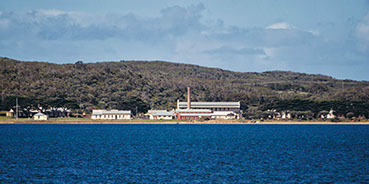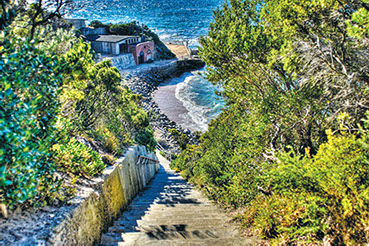POINT Nepean at the end of the Mornington Peninsula is one of four national parks slated for tourism development.
Over Easter, the state government released guidelines for the building of hotels, restaurants and other visitor facilities at Point Nepean, Port Campbell, Wilsons Promontory and the Grampians (Gariwerd).
The government’s intentions were first outlined in The News last year (“Parks a govt development target”, Western Port News 14/8/12 and Mornington News 21/8/12).
The News reported that extensive work had already been done developing Point Nepean National Park.
It is one of Mornington Peninsula Shire’s top tourist priorities – “accommodation, conferencing and marine infrastructure at Point Nepean”. A boutique hotel has been mooted for some years although previous attempts by the government’s Parks Victoria to find a developer failed.
Last year speculation about the Victorian government’s further plans to open up the state for tourism came from the 2011 report Unlocking Victorian Tourism by Victorian Competition and Efficiency Commission.
The speculation has now become reality with Environment Minister Ryan Smith on Easter Sunday releasing guidelines for new accommodation, restaurants and activities in national parks that used to be forbidden.
The Napthine government’s ambitions for Point Nepean are bound to attract criticism from peninsula conservationists as well as southern peninsula residents.
Mr Smith said applicants must submit a detailed environmental management plan as part of a five-stage approval process that included proving development would benefit the local community.
However, Matt Ruchel of the Victorian National Parks Association said it had no confidence in the government’s guidelines.
He said the guidelines were vague and would not ensure sensitive environmental values were protected.
“We’ll continue our campaign to oppose commercial development in national parks,” he said.
There had been proposals to open national parks to development for more than 50 years, he said.

“This is just another attempt in a long line of people trying to open the door to development in parks.”
Mr Smith said rigorous environmental conditions would be applied.
“The guiding principles will also make sure that any developments are sensitive to localised risk such as bushfires,” he said.
The Brumby Labor government produced a draft master plan for Point Nepean in 2010 but lost office later that year before it was fully implemented.
It included proposals for a hotel, restaurants, cafes, public meeting places and a museum.
Parts of Point Nepean were declared a national park in 1988. The federal government offered to sell the land to Victoria in 1998 and again in 2001, but the state rejected the offer.
In 2002 the Department of Defence proposed selling 311 hectares of land for development, retaining 1.6 hectares of contaminated soil and unexploded ordnance, since removed.
The sale was abandoned in 2003 following strong community protest. In 2004, 90 hectares of Department of Defence land was transferred to the federal government’s Point Nepean Community Trust, which managed the former quarantine station until the land was transferred to the state government in June 2009.
The federal government transferred 205 hectares of bushland, the old firing range, to Parks Victoria and the remaining 17.6 hectares to Mornington Peninsula Shire for community use.
The quarantine station was opened to the community as part of Point Nepean National Park in December 2009.
Point Nepean had been used by Aboriginal people for at least 40,000 years and has about 70 registered sites.
After European settlement, the area was used by limeburners and from 1852 as a quarantine station, home to people arriving by ship who had infectious diseases.
Fortifications were built from 1878 with gun batteries installed at Fort Nepean in 1886, Eagles Nest in 1888 and at Fort Pearce in 1911.
The guns were removed after the Second World War and the old quarantine station became the army’s Officer Cadet School and the School of Army Health from 1951 to 1985.




